Is this the most road-relevant form of motorsport today?

Inside the world of modern motorsport technology






Is this the most road-relevant form of motorsport today?









Ford makes a splash with its Dakar 2025 contender

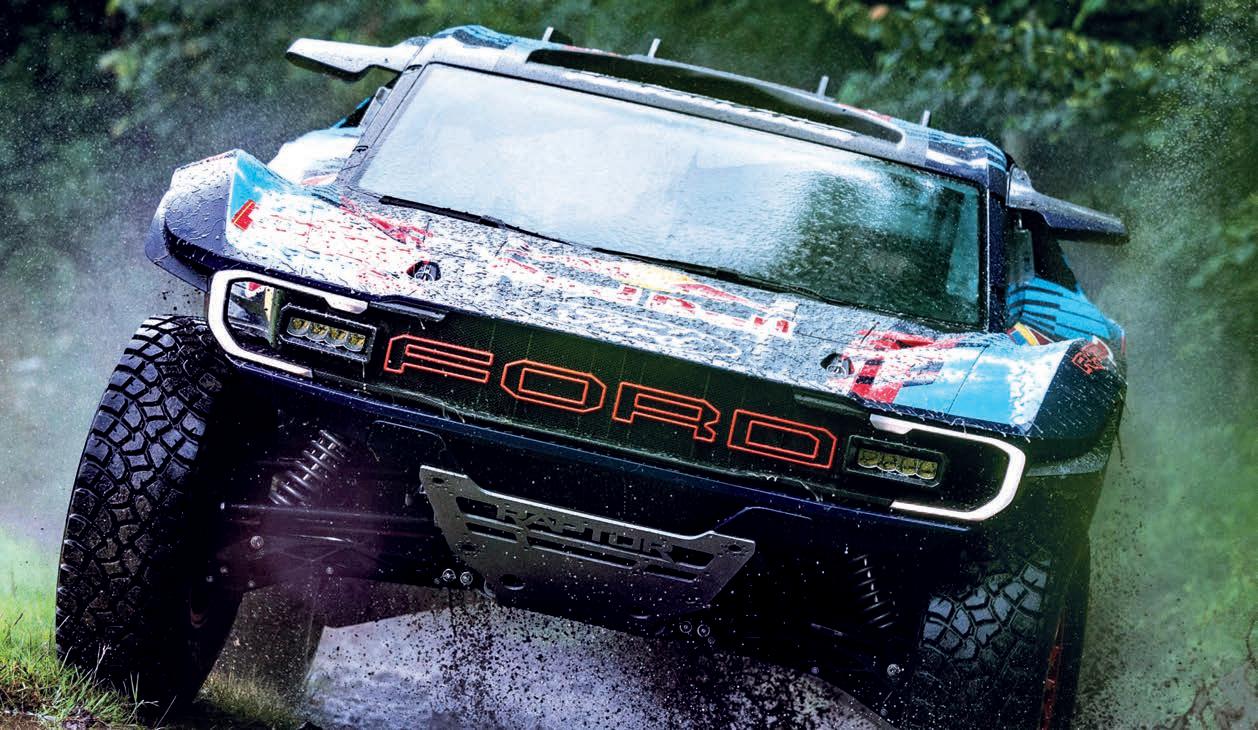
America’s Cup

NASCAR ELECTRONICS

The latest evolution ECU from McLaren Applied



How F1 thinking is helping INEOS yacht racing ambitions


SUPER FORMULA Spec damper creates a challenge in Japan



LE MANS PROTOTYPES Turbo technology for the new generation LMP3s


Ford is preparing to contest the 2025 Dakar Rally with a version of its Raptor, developed in conjunction with M-Sport in the UK
By LAWRENCE BUTCHER



Ford is heading to the Dakar Rally in 2025 with a T1+ class entry in the form of its aggressive Raptor pick-up.
Under the company’s Ford Performance brand, the truck will mark the Blue Oval’s rst attempt for overall honours in the desert classic, with the majority of build and preparation work on the machine undertaken by M-Sport in Cumbria, UK.
Though Ford may not have a long history at the Dakar, it is no stranger to rallying and, with an ever greater portion of its global revenues stemming from truck and SUV sales, there is no more prestigious, or arduous, billboard for its products than the Dakar.
Mike Norton, manager for Ford Performance’s motorsport activities in Europe, explains the thinking behind the programme: ‘At a NASCAR race in Michigan, Mark Rushbrook [global director of Ford
Performance] was talking to Jim Farley [Ford CEO] about various projects. With our quest to do more o -road, and the company moving towards trucks and SUVs, the conversation was along the lines of, “We should be in Dakar.” This led to Mark texting me to ask what it would take to do Dakar. That’s not a one word text back.’
That conversation took place two years ago and, with the idea rmly on the table, it was Norton’s job to look at Ford’s partners and nd the best match for the project. It was quickly decided on M-Sport as the logical choice. ‘They have a huge amount of o -road experience in rally, and that was how it was born. We wanted to present our o -road products in one of the toughest races on the planet,’ says Norton.

Ford does already compete in Baja and King of the Hammers events in the US, but in the production-based classes, rather than the more extreme Trophy Trucks, which do have some similarities to Dakar machines.
‘Baja is a completely di erent race in terms of how it’s run, the navigation, the speed,’ says Norton. ‘FIA cross country is much more regulated, particularly in terms of speed and things like suspension travel. There are some similarities – sand, for one, though not like you nd in the Empty Quarter of Saudi Arabia – and rough tracks, but the vehicles we have run are stock based, whereas the Dakar truck is a pure spaceframe prototype, built from scratch.

‘However, if you know how to design suspension kinematics, it’s not an art form, it’s just science, and having a good base understanding of the concepts.’

‘We wanted to present our off-road products in one of the toughest races on the planet’
Mike Norton, Ford
Performance motorsport activities manager, Europe
The LMP3 sportscar category is getting a refresh with a new V6 engine. Racecar caught up with the key players to nd out what’s changing
By DANIEL LLOYD

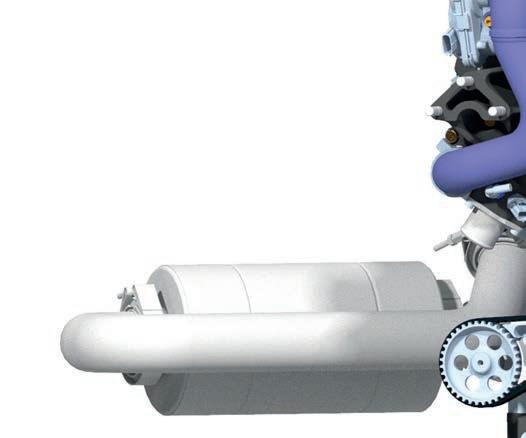


The sound of the LMP3 cars will change as a new V6 ORECA-developed engine, with integrated oil cooler and exhaust manifold, will be introduced for the 2025 season
Anybody who has been to the 24 Hours of Le Mans, or attended a European Le Mans Series (ELMS) meeting, will be familiar with two distinct sounds. One is the swarming call of the Gibson GK428, the naturally aspirated V8 engine that powers all LMP2 runners. The other is the deep rumble of the Nissan VK56, another naturally aspirated V8 that is found in the back of every LMP3 machine. Those two have pervaded sportscar paddocks in recent years, lling the air as dozens of cars using either power unit stream past. However, from next year, the latter note will become much rarer (and paddock conversations will be signi cantly easier).
This is because LMP3 is undergoing a major technical refresh, the second since its inception, that will see the thunderous 5.6-litre Nissan V8 supplanted by a twinturbocharged, 3.4-litre Toyota V6. With the
Nissan unit going out of production, LMP3’s governing body, the Automobile Club de l’Ouest (ACO), decided to introduce something new, with better fuel and sound e ciency, that was more in line with current road car technology. Two bidders went for the contract (with both o ering turbo solutions) and ORECA, which already supplied the V8, was selected to continue into 2025.
The new V6 engine’s arrival will signal the beginning of the end for one of the most recognisable sounds in sportscars, but potentially also o ers the glimmer of a fresh start for the car manufacturers hoping to generate new business.
LMP3 is approaching the end of its rst decade. The junior prototype formula was launched in 2015 as the third tier in the ACO’s endurance racing ladder, sitting below LMP2
and LMP1 (the latter has since been replaced by LMH and LMDh). Its mission has been to serve as a cheaper entry point for teams and drivers with fewer resources than those in LMP2. It has also occasionally been a springboard for careers. The exciting Danish talents of Mikkel Jensen and Malthe Jakobsen, both now part of the Peugeot LMH programme, were unearthed in LMP3. Similarly, several notable LMP2 teams, including United Autosports, Inter Europol Competition and Cool Racing rst made their case in the third division before stepping up to the bigger league.
To prevent cost escalation, licensed LMP3 manufacturers from the start were required to use a spec engine and Xtrac gearbox. After a tentative rst season with only a few cars on track, ELMS grid numbers exploded in 2016 and have remained strong. Interest was so high in fact that the ACO launched the Le

ORECA’s racing version of the Toyota V35A engine, which stems from the Lexus LS 500 road car, produces 470bhp. This adds another 15bhp… though the introduction of the beefier turbo engine and associated cooling adjustments has been worth around 40kg



Mans Cup, which continues to serve as an over ow series and a proving ground for teams that want to enter ELMS. It also enables LMP3s to compete in a support race at Le Mans.
The category has not been constrained to those ACO-run series, though. It has also been licensed to several independent competitions, many of them in Europe. In 2017, LMP3 was exported to North America, rst appearing in a support series before being added to the main IMSA SportsCar Championship in 2021. However, after three seasons in which the non-professional LMP3 drivers swiftly gained a sour reputation for causing incidents, and with other categories growing, the class was squeezed back out to the support ranks. Still, LMP3 as a platform has largely been a success, with hundreds of cars produced to date.
The ACO initially approved six manufacturers to build LMP3 chassis: ADESS, Ave-Riley, Dome, Ginetta, Norma and Onroak. The Dome project failed to get o the ground, while the Ave-Riley didn’t gain much traction. Norma became Duqueine following a buyout in 2017 and Onroak was re-branded to Ligier in 2018. Since then, ADESS, Ginetta, Ligier and Duqueine have been the four licensed constructors, and will continue into the upcoming 2025-’29 rule cycle.
The rst generation of LMP3 ran from 2015 to 2019 and, to make readers feel old, those cars are now already cropping up in historic racing. The ACO updated the formula in 2020, replacing the original 5.0-litre Nissan VK50 with the 5.6-litre Nissan VK56, which added
35bhp and increased total output to 455bhp. ORECA continued to build, supply and service the branded engine and powertrain package. Traction control was introduced to make the cars easier to drive for amateurs (there is no ABS), while Zylon anti-intrusion side panels were implemented for better safety. As part of the ACO’s cost-cutting ethos for the category, teams could upgrade their rst generation cars to second gen’ speci cation for much less than the price of a new vehicle.
The 2025 technical refresh therefore marks more of an evolution, considering the same carbon monocoques from 2020 have been carried over and most of the front-end components are unchanged. ADESS wanted to bring a new monocoque but was outvoted.
More signi cantly, the switch to turbo power has brought some substantial side e ects, such as major cooling system revisions and increased weight. ORECA’s racing version of the Toyota V35A engine, which stems from the Lexus LS 500 road car, produces 470bhp. This adds another 15bhp on what the second gen’ LMP3 engine produced, though the introduction of the bee er turbo engine and associated cooling adjustments has been worth around 40kg and required manufacturers to re-crash test.
‘All the manufacturers will have an increase of minimum weight due to the cooling system, which is much more demanding compared to the V8,’ says Duqueine Automotive CEO, Max Favard. ‘We have had a shift in weight distribution, and we have worked on the aero package to make sure we can compensate for this.’
Ligier Automotive technical director, Nicolas Monteil, also notes that the weight
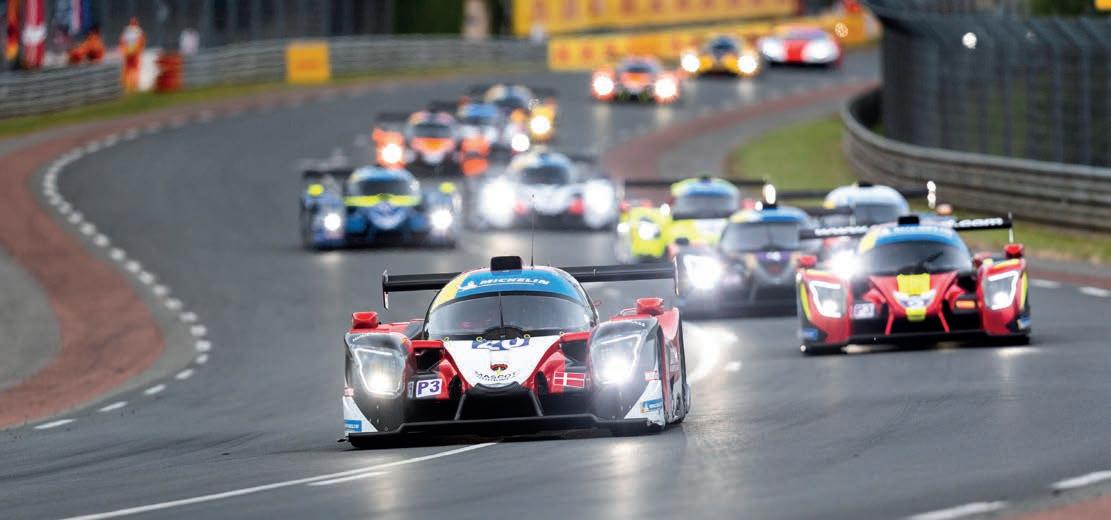

‘The TAG-510 provides the brains, but it is combined with an additional unit, called an EIU-510. That supplies specific I/O needed for combustion’
Josh Wesley, senior product manager at McLaren Applied


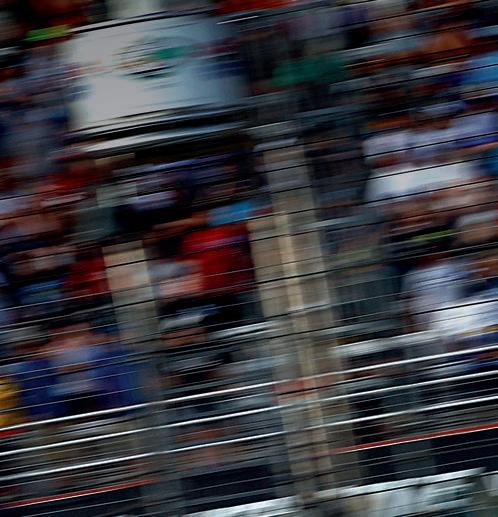




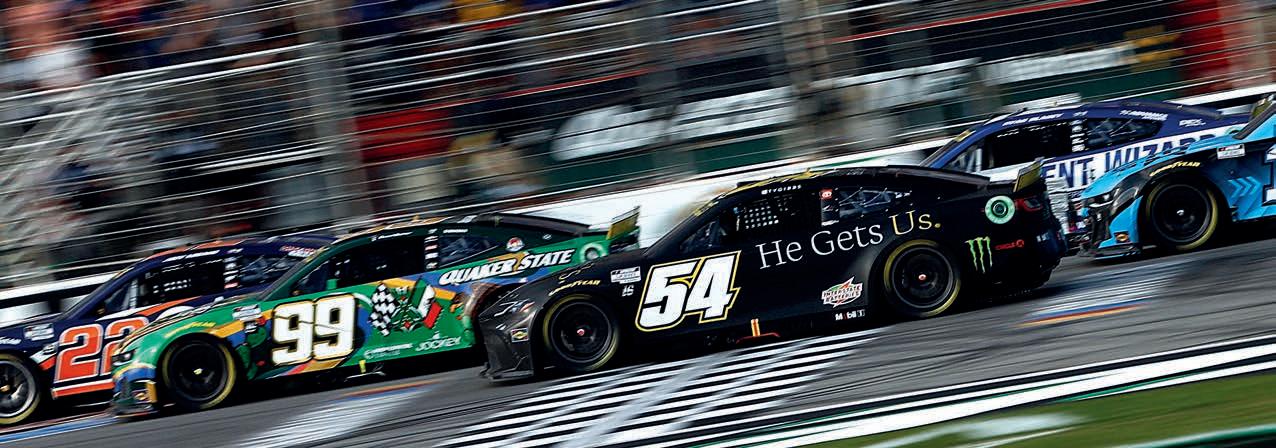

NASCAR used the same type of ECU for over a decade, but as car technology improved, so computing limitations were reached
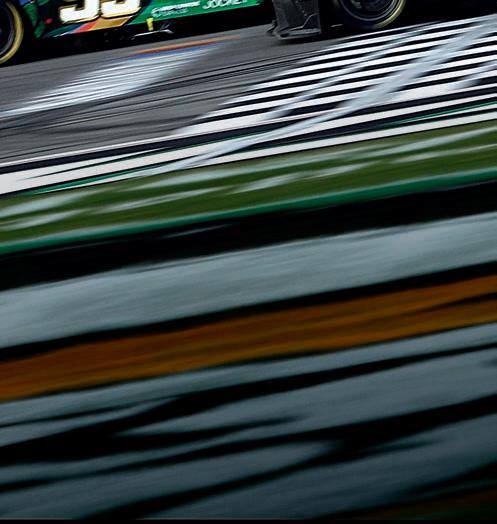





McLaren Applied has upgraded its operating system and produced a new series of ECUs ready for future technology advances
By ANDREW COTTON






On the face of it, there was nothing wrong with McLaren Applied’s existing TAG-400N electronic control unit. It was introduced to NASCAR in 2012 and, since then, has serviced the normally aspirated V8s during the Gen 5, 6 and 7 regulations. The control unit is so good that some of the teams are still running the original ones, yet to be serviced by McLaren Applied since they were rst installed into the cars, and still functioning perfectly well.

The 400 unit was something of a game changer in NASCAR when it was rst introduced. Although it was initially more expensive than alternative ECUs, it led to more e ciency, not only in servicing time but also in fuel mileage, which improved by an estimated 25 per cent through better engine management, as well as advanced electronics elsewhere in the car.
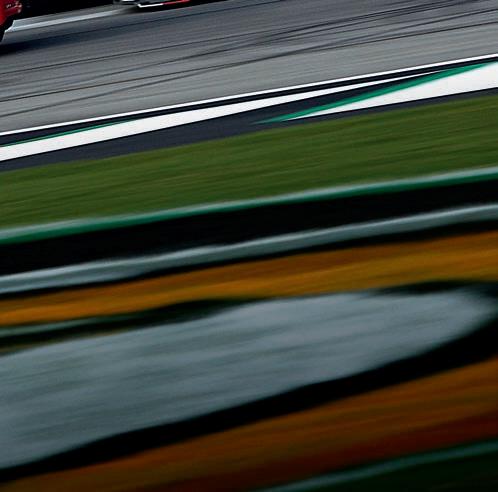
However, the 2024 season has seen the British company roll out the rst of a new generation of Series-500 ECUs. The rst for engine control is named the TAG-510 and will be introduced into NASCAR next season for testing, with full-time competition starting in 2026.

By GEMMA HATTON
For years, we have been told the story of technology transferring from racecar to roadcar. Though with automotive now a complex landscape of combustion, hybrid, electric and hydrogen powerplants, combined with the shift to autonomous and software defined vehicles, how much of a role does racing really play in the development of today’s fleet? To find out, we investigate arguably motorsport’s most relevant category to mainstream automotive – Formula E.
The championship marked a major milestone in the era of electrification as it was the first all-electric series to take to the track. It kicked off with the first (Gen1) Formula E car in 2014, which was raced by 10 teams, some backed by car manufacturers which then built powertrains for subsequent seasons. At the start, there were only 23 EV models available on the automotive market, whereas today there are close to 600.
Over the course of Gen2, which raced from 2018 to 2022, the number of powertrain manufacturers involved reached 10, while Gen3 so far has attracted seven, with a number of others waiting in the wings (for context, there were nine manufacturers in Hypercar at this year’s 24 Hours of Le Mans).
‘The reasons behind why a manufacturer chooses to be involved in Formula E varies for each manufacturer,’ says Jeff Dodds, CEO of Formula E. ‘Some are looking for pure R&D crossover, where the engineers at the racetrack go back to base and collaborate with other engineers, as well as with the commercial team. Others are involved because racing is part of their DNA, or they want to showcase their technology and benefit from the media exposure.
‘Ultimately, if a manufacturer wants to race electric and demonstrate their expertise in an inclusive world championship, then Formula E is the platform for them.
‘From a championship perspective, I think the optimum number of manufacturers in the series is between five and seven,’ continues Dodds. ‘We are allowed to have a maximum of 12 teams and 24 cars on the grid. Manufacturers usually want to capture data from two teams, so that’s why we see most entering [both] a factory and a customer team. If they all follow that same model, it means a maximum of six differemt manufacturers but, with a bit of flexibility, five to seven feels like the right number.’
It isn’t just the powertrain that makes Formula E unique, but the intention behind the regulations, too. The series features a highly standardised package, which includes spec batteries, chassis, aerodynamics and tyres, while the motors, inverters, transmission and control systems are all open for development.
On track, the sporting regulations also limit the amount of energy teams have to complete the race. Each car starts with 20-55 per cent less energy (depending on the circuit) than they need to run flat out to the chequered flag, so they have to make up the deficit through regenerative braking and energy saving. This forces teams to focus their attention on energy efficiency technologies, as well as energy management strategies.
‘The objective in Formula E is to maximise energy efficiency,’ explains Tommaso Volpe, team principal at Nissan Formula E Team, which has been a manufacturer in the championship since 2018. ‘This means ensuring as much of the electrical energy provided by the battery is converted into kinetic energy at the wheels as possible. In Formula E, we are now achieving energy efficiencies above 95 per cent, so less than five per cent of the energy is wasted through heat or noise, which is impressive.
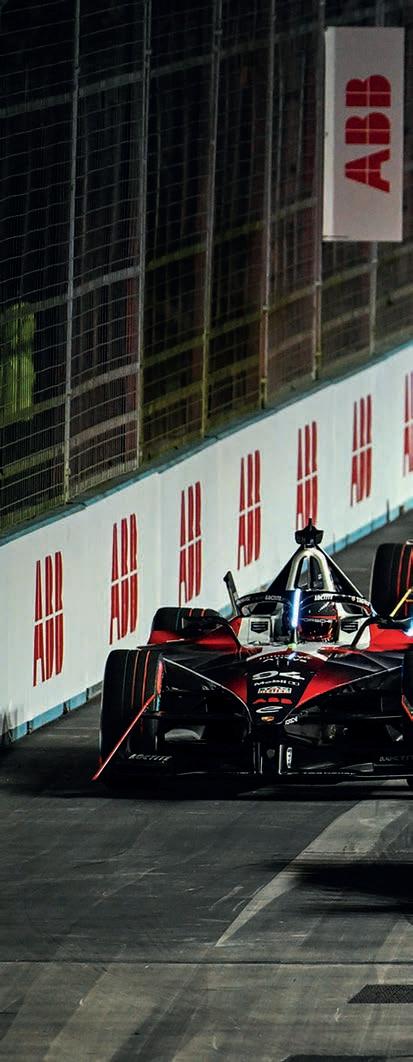
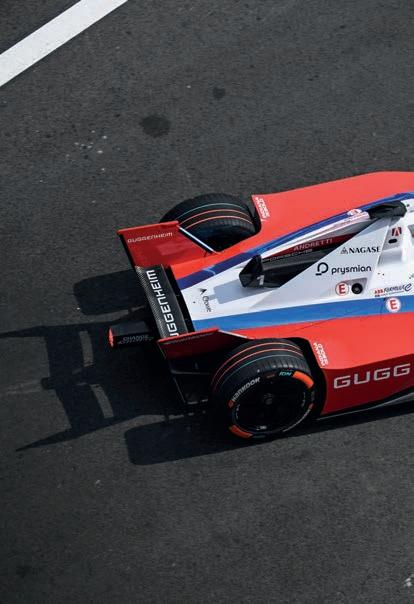
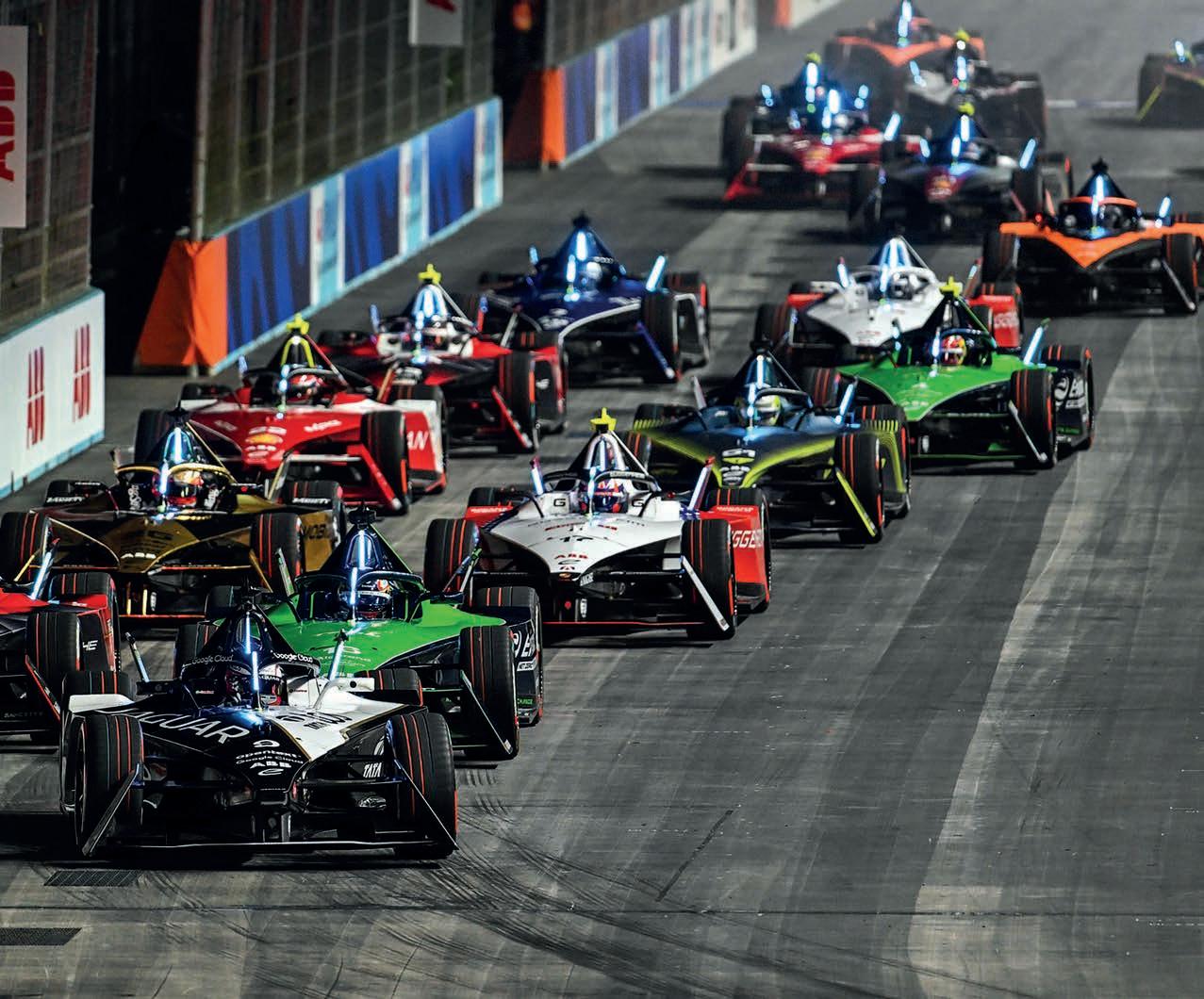


‘The software is directly transferable to automotive because it is less restricted by budget. You win or lose races based on how well you manage energy, so the energy management software we use in Formula E is extremely sophisticated’ Tommaso Volpe, team principal at Nissan Formula E Team
‘This is achieved through innovative design and use of materials, as well as complex software,’ continues Volpe. ‘The software is directly transferable to automotive because it is less restricted by budget. You win or lose races based on how well you manage energy, so the energy management software we use in Formula E is extremely sophisticated. It allows engineers to continuously optimise the energy targets for the driver, lap by lap, and react to scenarios during the race. This level of sophistication, along with all the other experiments we do in racing, are gold for the core business of road cars because in automotive, improving energy e ciency signi cantly increases the range of a vehicle.’
Of course, there are substantial di erences between the two industries. The budget per vehicle is much higher in motorsport than automotive, so some of the more expensive technologies are not feasible to scale up across thousands of production cars.
Reliability is another di erentiator. A Formula E powertrain is built to last around 50,000km, while a road car needs to endure over one million kilometres, at the very least.
‘The interesting thing about electri cation, when compared to other technologies that transfer to road cars, is its exibility,’ highlights Volpe. ‘The energy management software is as strong for a brand like Nissan whether we are building a sportscar, or a city car like the Leaf. Electri cation is much more exible than internal combustion technology, for example.
‘The power output of an engine is typically optimised for a very narrow operational window, whereas the power output of a motor is dictated by the software. In essence, the same motor can be utilised for a sportscar or an SUV, it’s just the software that changes how the energy is deployed. That’s probably why there are more mainstream brands involved in Formula E than any other category of motorsport, because it is not just relevant for high performance cars, but other vehicles as well.’

‘We learned a lot as an organisation from a technical point of view, and exercised a lot of the test rigs that we built using the F1 culture’
Geoff Willis, former F1 technical director and now technical director of the INEOS America’s Cup team